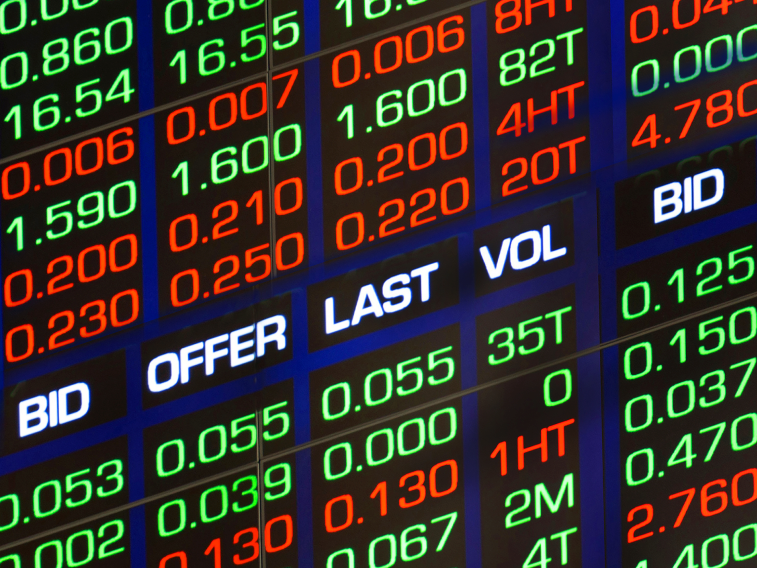28 May 2025
An investment loan to help capitalise on investment opportunities and build wealth and diversification without margin call risk
February 10, 2025
The Australian dollar is impacted by the health and outlook for the domestic economy but there are also many international influences at play
By Ryan Harrington - Investment Insight
The value of a country’s currency reflects how global markets perceive its economic performance. That said, currency markets are subject to volatility, as central bank decisions, world events and country specific influences all feed into the mix of determining how one currency will trade against another.
For Australia and its dollar (AUD), a country specific influence is the outlook for commodities. This is because our ‘country wealth’ is heavily impacted by the value of materials like iron ore, gas, coal, and agricultural products that we export. Australia is known as a commodity currency, a trait we share with New Zealand and Canada.
Another influence is interest rates. In periods where our interest rates are higher than our peers, it can create an attractive destination for large funds and even other countries to park cash. When cash flows into a nation it bolsters the currency. The reverse occurs when funds flow out to another destination.
Global sentiment around risk can also be a major factor on the direction of the Australian dollar, as it is considered a ‘risk off’ asset, meaning that investors will gravitate away from the currency and into assets that are considered safer, such as the US dollar, treasuries or gold.
Australia’s top 10 exports are all commodities based, eight from the resources sector and two from agriculture. These top exports account for over 25% of the nation’s GDP, and based on current data1 will bring in more than half a trillion dollars this year in export income.
Because of this, the AUD tends to be correlated to global commodity prices. When there is global economic expansion and an increase in commodity prices, the AUD has historically benefited from this and increased in value. Reversely, during economic downturns and a reduction in the need for materials globally, the AUD has been negatively impacted and lost value.
As commodity prices have fluctuated through various boom and bust cycles, the Australian dollar has followed these cycles. Notably, during the economic expansion of China during the 2000s decade, the Australian dollar ranged from a low of US$0.47 in 2001, to a high of US$1.10 in 2011, according to MacroTrends2.
China has been a major importer of Australian materials for many years, with the nation making up 32% of Australia’s overall exports in 20243. The Australian dollar has become quite sensitive to China’s economic performance, as prices for commodities such as coal and iron ore are heavily influenced by demand from China.
An interest rate differential is the gap between central bank interest rates of two countries, with the most relevant to Australia being the interest rate difference against the US Federal Reserve cash rate. Central banks have a focus on maintaining inflation at target levels and keeping people employed. For them to juggle this and maintain equilibrium, they have the power to increase or decrease interest rates.
Global economies can experience alternate economic cycles at different times, meaning that short term interest rates can be quite different around the world at any given point. Investors will lean towards economies with higher rates to yield a superior return on their investment.
Historically, Australia has had higher interest rates than the United States since the float of the AUD in 1983 (85% of the time). However, as US interest rates rise, or Australian interest rates fall, investors will adjust where they are positioned as that interest rate gap narrows. There is a high correlation between the interest rate differential and the value of the Australian currency, with the AUD trading below long-term average levels when US rates are higher than Australia’s.
The Australian dollar is heavily influenced by changes in risk sentiment across the global macroeconomic landscape. This is because the AUD is considered a risk asset due to its close connection to global economic cycles, commodity prices, and economic size.
Geopolitical tensions, global elections (particularly the US), and pandemics are examples of times of heightened uncertainty where investors become risk averse. They tend to reallocate investment away from risk assets such as the AUD, and into assets considered ‘safe havens’ which maintain value, for example the US dollar and gold. Whilst sentiment around risk is considered a short-term factor on the currency, it can cause significant shifts in short term value.
In summary, the value of the Australian dollar is shaped by a range of interconnected factors, including but not limited to commodity prices, interest rate differentials, and global risk sentiment. As a major exporter of raw materials, Australia’s economy (and consequently the AUD) depends heavily on the strength of global demand for commodities. Interest rate differentials also play a crucial role in attracting or repelling foreign investment, while shifts in global risk sentiment can trigger sharp movements in the currency’s value. Together, these dynamics make the AUD sensitive to both domestic economic conditions and broader global developments, reinforcing its status as a risk-sensitive asset.
To discover more call 1300 683106 or email us on investordesk@nab.com.au
1The 10 Biggest Exporting Industries in Australia – 2024 | IBISWorld, opens in new window
2China — Record imports from Australia, but economic headwinds mount, opens in new window
3Australian – US Dollar Exchange Rate (AUD USD) – Historical Chart | MacroTrends, opens in new window
The information contained in this article is believed to be reliable as at February 2025 and is intended to be of a general nature only. It has been prepared without taking into account any person’s objectives, financial situation or needs. Before acting on this information, NAB recommends that you consider whether it is appropriate for your circumstances. NAB recommends that you seek independent legal, property, financial and taxation advice before acting on any information in this article. ©2025 NAB Private Wealth is a division of National Australia Bank Limited ABN 12 004 044 937 AFSL and Australian Credit Licence 230686.
The information contained in this article is intended to be of a general nature only. It has been prepared without taking into account any person’s objectives, financial situation or needs. NAB does not guarantee the accuracy or reliability of any information in this article which is stated or provided by a third party. Before acting on this information, NAB recommends that you consider whether it is appropriate for your circumstances. NAB recommends that you seek independent legal, property, financial and taxation advice before acting on any information in this article. You may be exposed to investment risk, including loss of income and principal invested.
You should consider the relevant Product Disclosure Statement (PDS), Information Memorandum (IM) or other disclosure document and Financial Services Guide (available on request) before deciding whether to acquire, or to continue to hold, any of our products.
All information in this article is intended to be accessed by the following persons ‘Wholesale Clients’ as defined by the Corporations Act. This article should not be construed as a recommendation to acquire or dispose of any investments.

INSIGHT
28 May 2025
An investment loan to help capitalise on investment opportunities and build wealth and diversification without margin call risk
